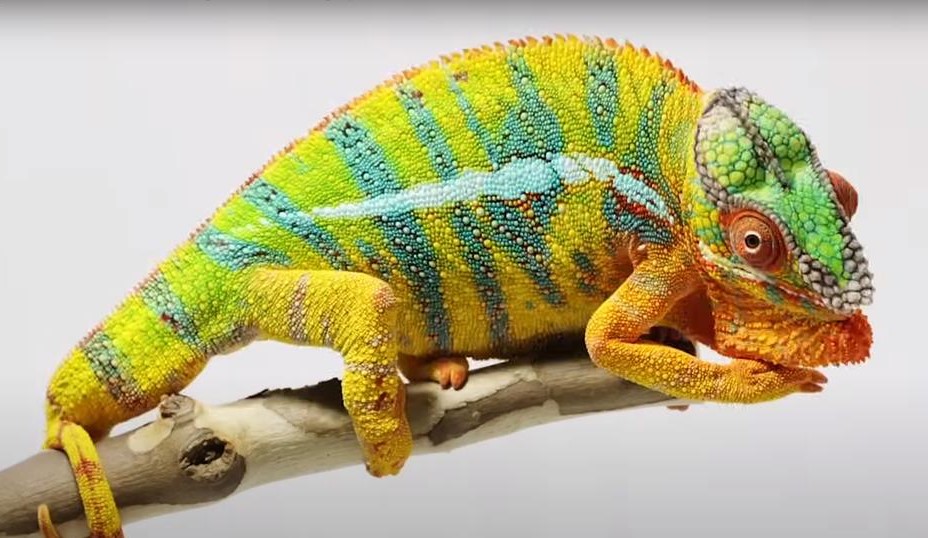Ensure proper lighting and maintain appropriate humidity levels to keep plants alive in a chameleon cage. Select hardy plants that can thrive in your chameleon’s specific habitat conditions.
Creating a vibrant and living environment for your chameleon not only enhances the aesthetic appeal of the enclosure but also contributes to the well-being of your pet. Live plants in a chameleon cage offer natural shelter and climbing opportunities, crucial for the arboreal lifestyle of these reptiles.
To successfully integrate plant life into your chameleon’s home, you must emulate the natural ecosystem in which both the flora and the chameleon flourish. Climate control is essential; providing adequate lighting for photosynthesis and maintaining humidity through misting and proper ventilation keeps the plants healthy. Choosing sturdy, non-toxic species that can withstand a chameleon’s interaction is equally important. By meeting these conditions, you can create a dynamic and self-sustaining habitat that mirrors the lush foliage found in a chameleon’s natural environment, which not only promotes their physical health but also stimulates their mental engagement.
Creating A Chameleon-friendly Habitat
Welcome to the green world of Creating a Chameleon-Friendly Habitat. Alive with lush leaves and vibrant flowers, this lush environment is not only pleasing to the eye but also essential to the well-being of your chameleon. In this section, we’ll explore how to choose and maintain plants that will thrive alongside your scaly friend.
Choosing The Right Plants
When selecting flora for your chameleon’s abode, think safe, non-toxic, and sturdy. Below are key factors to consider:
- Edible options – Chameleons might nibble on leaves. Pick non-toxic plants.
- Strong branches – For climbing and support.
- Size and growth – Consider how big the plant will get. Ensure it fits.
Some top plant choices include:
| Plant | Reason |
|---|---|
| Ficus | Sturdy and non-toxic |
| Pothos | Easy to grow, cleans the air |
| Hibiscus | Beautiful and safe for nibbling |
Understanding Humidity And Temperature Needs
Maintaining the right humidity and temperature is vital for plant survival in a chameleon cage. Chameleons require specific conditions that vary by species, typically within:
- Humidity: 50-80% for most species.
- Temperature: 72-80°F (22-27°C) during the day, slightly cooler at night.
Invest in a hygrometer and thermometer to monitor these levels closely. Use misting systems and heating lamps to adjust as needed. Remember, consistency is key to a healthy habitat. Keep water available for plants to absorb and ensure proper airflow for temperature regulation. This ensures your green companions remain a lush and safe haven for your chameleon.
Lighting Essentials For Plant Growth
Keeping plants alive in a chameleon cage demands specific lighting essentials. Plants need the right type and amount of light to perform photosynthesis, which is vital for their growth and health. Let’s explore how to strike the perfect balance of light to keep your green companions thriving alongside your chameleon.
Artificial Vs. Natural Light
The debate between artificial and natural light is crucial for plant vitality. Natural sunlight is the best for plants, but not always practical in chameleon habitats. Here are key points to consider:
- Natural light varies daily and seasonally, which might not be consistent for plants.
- Artificial light offers control over intensity and duration, important in a controlled environment.
Selecting The Best Lighting Equipment
The correct lighting equipment is pivotal for keeping your plants vibrant. Consider these factors when selecting lights:
| Feature | Description | Benefit |
|---|---|---|
| Full-Spectrum Bulbs | Imitate natural light | Support all plant growth stages |
| LED Lights | Energy efficient and long-lasting | Reduces replacements and saves energy |
| UVB Bulbs | Provide UV for chameleons and plants | Promotes healthy metabolism and growth |
Ensure plants receive 10-12 hours of light daily. Use a timer for consistency. Plants and chameleons will flourish under the right lighting setup.
Watering Practices In A Chameleon Enclosure
Keeping plants alive in a chameleon cage is crucial for your pet’s habitat. Not only do they provide humidity and air quality, but they also offer a playground for your chameleon. Proper watering ensures these plants thrive without harming your chameleon.
Misting Systems For Hydration
Chameleons and plants both love mist. The right misting system does wonders for their enclosure, mimicking their natural habitat’s humidity levels. Consider these pointers:
- Automatic misters: Set them to run a few times daily.
- Manual misting: Mist plants every other day, more if your home is dry.
- Hygrometers help: Use them to monitor humidity levels easily.
Avoiding Over-watering And Root Rot
Too much water is a no-go for chameleon plants. Here’s how to avoid harm:
| Tip | Action |
|---|---|
| Check soil moisture | Before watering, make sure the topsoil is dry. |
| Drainage holes | Ensure pots have them to prevent water logging. |
| Water quantity | Use just enough to moisten the soil, not soak it. |
Soil And Fertilization For Healthy Plants
Keeping plants healthy in a chameleon cage requires the right soil and fertilization. Read on to explore the best practices to ensure your plants thrive, providing a natural habitat for your chameleon.
Appropriate Soil Types
Choosing the right soil is crucial for plant health in a chameleon cage. Let’s find out what types work best:
- Organic Potting Mix: A blend of peat, pine bark, and perlite is ideal.
- Sand-Free Soil: Prevents impaction risks for the chameleon.
- Drainage Layers: Add gravel or hydro balls to promote water flow.
Always pick a soil that supports moisture without becoming soggy. This balance keeps roots healthy and avoids unwanted bacteria.
Safe Fertilization Methods
Plants need nutrients, but how do you fertilize safely around chameleons? Here’s a simple guide:
- Use Organic Fertilizers: They are safer for your chameleon.
- Avoid Chemicals: Skip synthetics that can harm your pet.
- Compost Teas: A gentle option to nourish plants.
Apply fertilizers sparingly and away from the chameleon’s main perching area. Healthy plants create a lush environment for your pet.
Maintaining Plant Health With Pruning
Pruning is essential for keeping your chameleon’s habitat lush and your plants healthy. It involves cutting back overgrown branches and leaves. This practice allows light and air to reach all parts of the plant. It also encourages new growth. Keeping your plants well-pruned benefits both the plant and your chameleon.
Techniques For Pruning
- Identify overgrown areas: Look for parts of the plant that block light or crowd your chameleon’s space.
- Use the right tools: Clean, sharp scissors or pruning shears are best.
- Make clean cuts: Cut just above leaf nodes to promote healthy regrowth.
- Remove dead foliage: Cut away yellow or brown leaves to keep plants strong.
- Prune regularly: Check plants weekly for areas that need trimming.
Balancing Plant And Chameleon Space
Chameleons need room to climb and explore without plants taking over. Set up your cage with these points in mind:
| Plant Placement | Chameleon Space |
|---|---|
| Keep taller plants in back | Ensure clear paths for climbing |
| Spread out foliage for shade | Leave open areas for heat lamps |
| Position plants for privacy | Allow spaces for your pet to bask |
By carefully pruning and arranging plants, you create a safe, stimulating home for your chameleon. Remember to always adhere to pruning best practices and your chameleon’s needs.
Common Challenges And Solutions
Keeping plants thriving in a chameleon cage often feels like fighting a silent battle. From pests to plant diseases, several hurdles could wilt your green oasis. Fear not! Practical steps will turn your chameleon’s abode into a lush haven.
Addressing Pest Infestations
Chameleons love to hunt, but unwanted pests can overrun cage plants quickly. Battle these invaders with natural methods to keep your foliage and chameleon healthy.
- Inspect plants before placing them in the cage.
- Introduce beneficial insects such as ladybugs to eat aphids.
- Avoid chemical pesticides that harm chameleons. Use neem oil instead.
- Clean foliage regularly with a gentle wipe to remove pests.
Dealing With Plant Disease
Plants in a chameleon cage can suffer from diseases. Prevent and tackle these effectively for a thriving environment.
- Ensure proper air circulation within the cage to prevent mold and fungus.
- Select resistant plant varieties that can withstand the high humidity.
- Isolate affected plants immediately to stop the spread of disease.
- Use safe fungicides if necessary, ensuring they are non-toxic to your pet.
Frequently Asked Questions For How Do You Keep Plants Alive In A Chameleon Cage?
What Lighting Is Needed For Plants In Chameleon Habitats?
Chameleon cages require full-spectrum UVB lighting to support plant growth. Position the light above the cage to mimic natural sunlight. Keep the light on for about 12 hours a day to ensure that plants receive adequate light to photosynthesize effectively.
How Often Should I Water Plants In A Chameleon Cage?
Water plants in a chameleon cage when the topsoil feels dry. Chameleons enjoy humidity, but overwatering can harm the plants and create harmful bacteria. It’s typically sufficient to water once or twice a week, depending on the humidity levels and plant species.
Can Chameleons Damage The Plants In Their Cage?
Chameleons may nibble on plants or use them for climbing. Select hardy species that can withstand some wear. Avoid delicate plants that can easily be damaged or uprooted. Regularly check and trim any damaged foliage to keep plants healthy.
Which Plants Are Safe And Beneficial For Chameleon Enclosures?
Non-toxic plants like ficus, hibiscus, and pothos are safe for chameleons. They provide hiding spots and climbing areas, benefiting the chameleon’s well-being. Always research plant safety before introducing them to your chameleon’s cage.
Conclusion
Caring for plants in a chameleon habitat blends nature’s beauty with practical care. To keep them thriving, consider light, water, soil, and species compatibility. Remember, your leafy choices should support your chameleon’s health and create a slice of the wild at home.
With these tips, watch your green companions flourish alongside your colorful friend.


